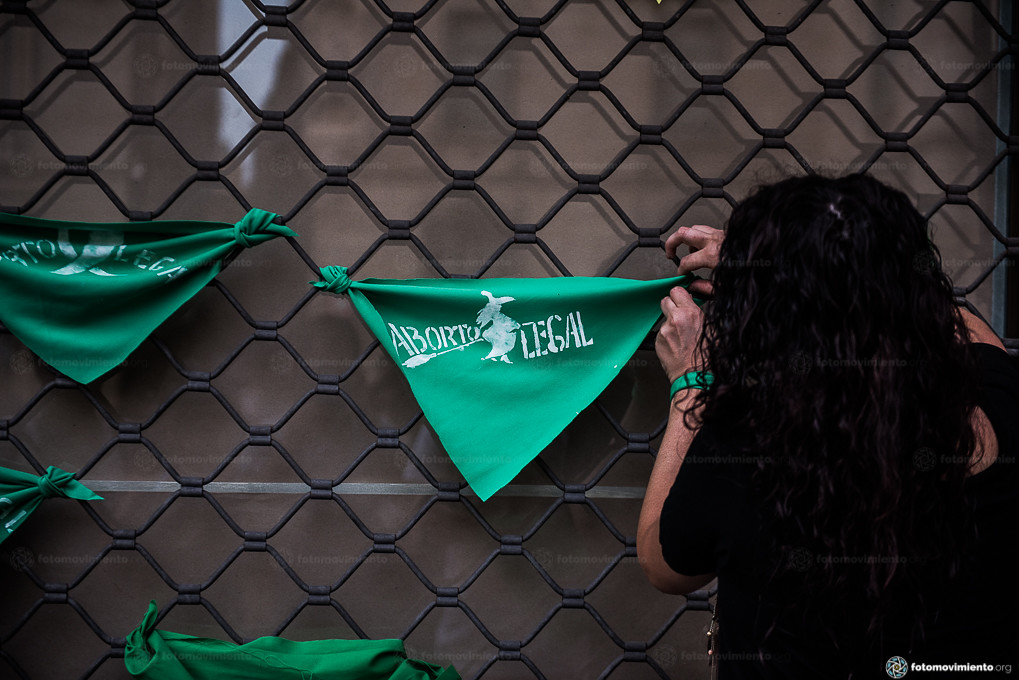by Brenda Werth and Katherine Zien*

With the U.S. Supreme Court apparently poised to strike down Roe v. Wade, U.S. supporters of women’s reproductive rights could learn from the strategies of their Latin American counterparts, who have made important advances even if they still feel they must struggle for implementation. The decision will put the United States out of step with global progress being made in sexual and reproductive rights, according to the Secretary General of Amnesty International. In the last 25 years, around 50 countries have increased legal access to abortion. Latin America, a traditionally Catholic region, has been at the forefront of decriminalizing and legalizing abortion rights.
- In 2012, Uruguay legalized abortion of fetuses up to 12 weeks. In January 2020, Argentina became the largest Latin American nation to legalize abortion, allowing pregnancies to be terminated up to 14 weeks. Mexico followed suit and decriminalized abortion in September 2021, and in February 2022, Colombia decriminalized abortion up to 24 weeks. Chile, if its new Constitution is approved, will be the first country in the world to make abortion a constitutional right. While abortion rights are more limited in 10 countries in Latin America and the Caribbean, these represent major strides forward.
The progress in Latin America comes on the heels of a revolution in gender and sexuality rights across the region catalyzed by feminist mobilization against gender violence and femicide in movements and street protests such as NiUnaMenos (Argentina), Un Violador en tu camino (Chile), and NiUnaMás (México). Abortion rights – framed as crucial to protecting reproductive health – were integrated into a preexisting human rights framework. Feminist groups have argued that the prohibition of access to legal and safe abortion is an act of gender violence.
- The path toward legalization is clearest in Argentina, where a human rights culture created initially by groups like Madres de Plaza de Mayo during the last dictatorship (1976-83) led to feminist movements such as NiUnaMenos and the Marea verde (Green Tide), symbolized by the green handkerchiefs donned by supporters of the Campaign for Legal, Safe and Free Abortion. The Campaign also used inclusive language to expand the definition of those entitled to abortion rights to include anyone capable of gestation, including gender non-conforming individuals. The struggle has also been intergenerational (Barbara Sutton, “Intergenerational Encounters”). Sometimes referred to as the “revolución de las hijas” or “las pibitas,” a young generation including high schoolers took to the streets and transformed public spaces and social perceptions of abortion rights in Argentina.
- Abortion rights in Argentina thus intersected with progressive legislation on gender and sexuality rights. In 2020, President Alberto Fernández, who described abortion as “a matter of public health” during his campaign, introduced the bill in Congress legalizing abortion. His predecessor, conservative President Mauricio Macri (2015‑2019), had allowed the bill to be debated in Congress, and before him, left-wing President Cristina Fernández de Kirchner (2007‑2015) supported progressive legislation on sexual and gender rights even though she refused to support abortion reform because of personal views.
The “doble militancia” (Debora Lopreite, “The Long Road”) – the popular mobilizations and political coalition-building pushing for reproductive rights as issues of human rights, public health, and social justice – contributed to Argentina’s landmark law. Activists continue to be vigilant, however, as abortion access has been hindered by opponents and the high percentage of doctors, particularly in the northwest provinces, who declare themselves “conscientious objectors.”
- Argentina’s path has been very different from that of the United States. The right to abortion in the United States was nested within the umbrella of privacy rights and became a federal policy via the judiciary rather than the legislature. U.S. activists have not strategically framed it as a human right firmly in the context of public health and social justice. To achieve lasting change, they could shift discourse away from abortion as a single issue, an anti-religious position, or an abstract philosophical debate, and situate it firmly in the context of public health and social justice. Grassroots social mobilization across generations, strategic coalition-building, and transversal relationships between activists and policymakers don’t guarantee irreversible change, but they are more reliable drivers of change than the shifting political winds affecting Supreme Court justices.
June 9, 2022
* Brenda Werth is an Associate Professor of Latin American Studies and Spanish at American University. Katherine Zien is an Associate Professor of Drama and Theater at McGill University
